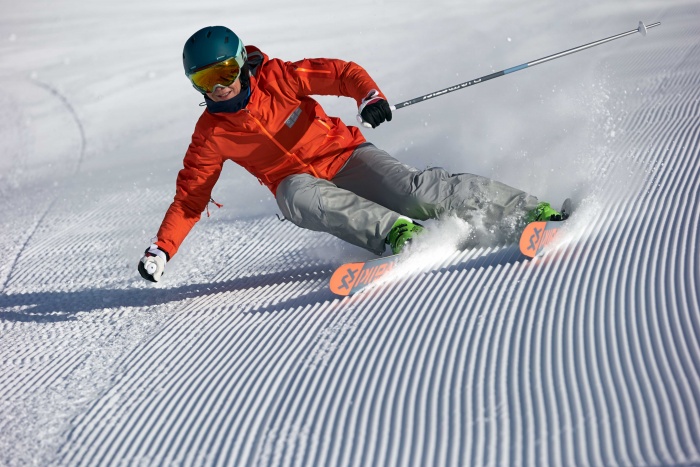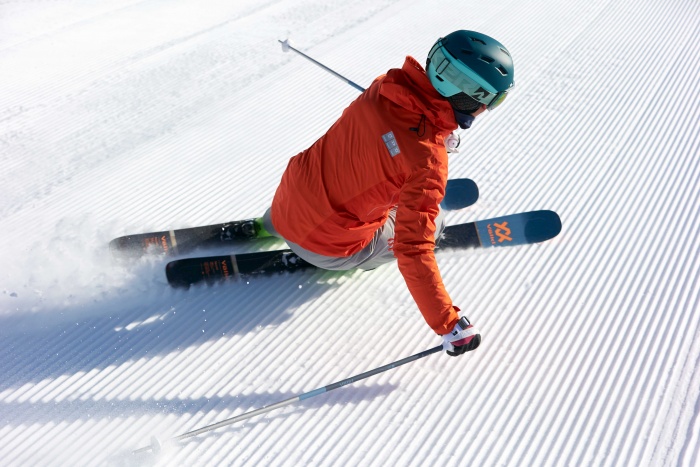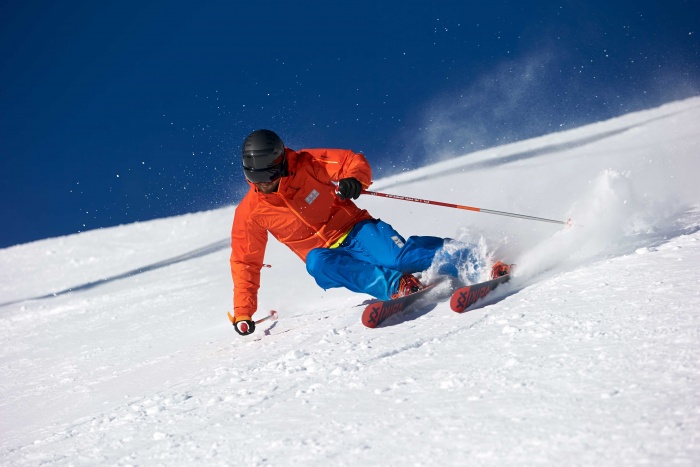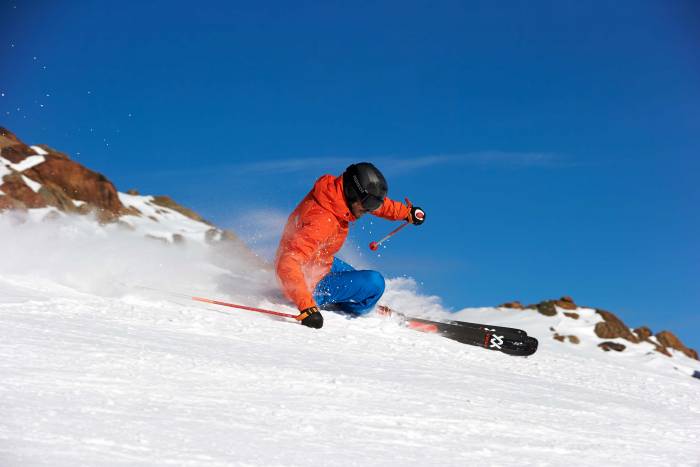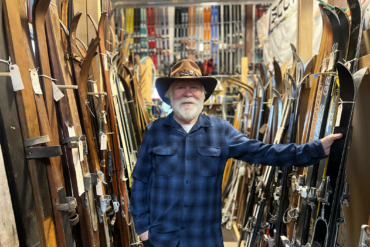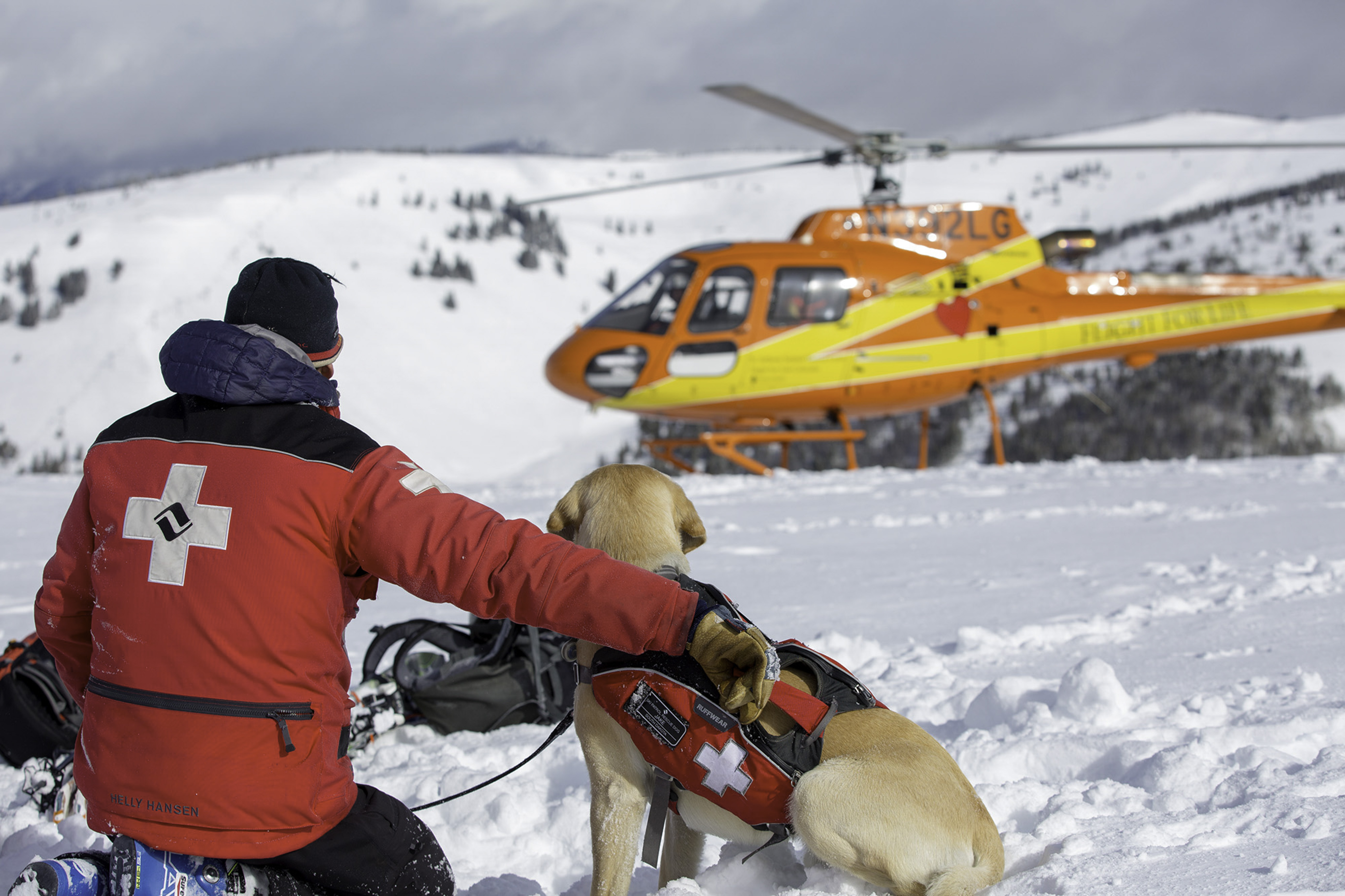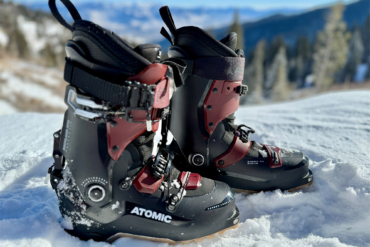Volkl revamped its most popular ski, the Mantra, for fall 2018. We traveled to Austria to get a first-hand look at its next generation, the Volkl Mantra M5.
Volkl just redesigned its most popular ski. The result, in short, is a versatile ripper that should have skiers singing its praises. The brand invited GearJunkie to its Straubing, Germany, factory to see how it builds the new all-mountain/freeride Mantra M5. So of course, we took it for a ride.
In short: The Volkl Mantra M5 is a versatile ski that rips on groomers and crud alike. We didn’t get a chance to charge it on powder, but we expect it would be a great ride on the soft stuff too.
Volkl Mantra M5: Redesign of a Popular Ski
First released in 2005, the Mantra is Volkl’s most popular all-mountain ski, dwarfing all other models in sales. The new M5 ($825) marks its fifth generation with several key improvements over its predecessors.
The M5 (134/96/117) has softer flex in the middle, a narrower width underfoot at 96 mm, and a move away from full rocker to tip and tail rocker, blending 2 mm of camber underfoot.
Designers also tightened the turn radius from 23.6 to 19.8 m. They moved the ski’s widest spot 15 mm down from where the tip starts to rise.
Augmenting moderate taper, sidewall construction, and a multi-layer wood core, the M5 has a customary full Titanal layer on the bottom. But instead of a similar layer on top, it employs three separate overlapped “frame” pieces of varying thickness. Coupled with carbon tips, the move reduces weight to 2,020 grams, a reduction of 50 grams per ski. As a result, the ski caters to all conditions and consumer groups.
They are available in 170, 177, 184, and 191 cm.
“Consumers want easy access and a ski for all environments, so we made it more forgiving,” said marketing director Arnd Hemmersbach. “It’s one of the most important skis of our entire collection and will be a true heritage ski for us.”
Testing the 2018 Volkl Mantra M5
The proof, of course, is in the on- and off-piste pudding. To see how it skied, we headed to the topmost glaciers of Solden, Austria, just two weeks after the World Cup.
While there, we tested the hot-off-the-press ski on groomers and, when the tuners weren’t looking, early-season, out-of-bounds powder.
It lived up to its “heritage ski” hoopla. At first turn, I wish I had a pair to call my own. I found the sweet spot quickly and initiated a carve.
On-piste, it held an edge no matter how hard I tried to skid it. Whether arcing wide GS turns or tighter slalom carves, its 96-mm underfoot platform kept it quick for dodging errant, and unpredictable, early-season skiers.
With the Titanal’s great power transmission and torsional stability, it also stayed quiet at high speeds, especially when trying to keep up with designer and ski instructor Jonas Braunmiller. They skied smooth, both at high speeds chasing Braunmiller around and on the roughs, as when we veered through uphill T-bar riders to get to the far side (something you won’t see in the U.S.).
The only chatter was our collective rave about it in the gondola.
Further showing this is a single-quiver ski, it revealed versatility more when we ventured off-piste into cut-up powder from a week-old, 3-foot-deep storm.
There, it also excelled: The wide shovel and carbon tips floated like a periscope above crud and untracked snow like the clouds wisping in the cobalt skies. The skis seemed like they were designed for powder as much as power on the groomers.
Perhaps the real testament came in the lift line. A skier noticed it as the newest version of the Mantra. “I love mine from last year,” he said. “I don’t know how they could have made it better.”
But make it better Volkl did, even with its pedigree.
Specs and Development
Volkl went through 10 different concepts for the ski, on snow and in the lab. The brand assessed everything from absorption and dampening to rocker, flex, and width to come up with the final model.
The factory tour provided witness to the ski’s unique top sheet Frame Construction. After laying in the customary bottom sheet of Titanal, technicians pieced three shapes together for top layer, each of varying thickness.
It employs Titanal on the edges, tip and tail, and midsection. This technique maximizes dampening and absorption while reducing weight.

After all the layers are stacked, the ski spends 25 minutes in the press before cooling for another 10. When it comes out, a translucent top sheet provides a window into the technology inside.
“We wanted to make our technologies visible, letting consumers see the outline of the Titanal frame,” said lead designer Dominik Grunert, adding that reducing graphics helps drive the ski’s aesthetics.
Having seen the ski through from press to powder, I was impressed. It’s a great new entry from a top brand, and one I expect to see regularly on the slopes when it hits the market in 2018 for $825.

